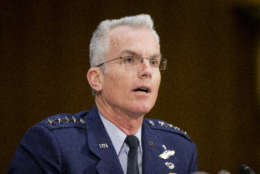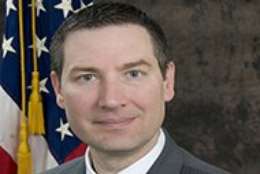Hubbard Radio Washington DC, LLC. All rights reserved. This website is not intended for users located within the European Economic Area.
Reporter's Notebook
-
The nation’s number-two military officer added himself to the list of Defense officials who’ve expressed unease about taking funds away from the State Department as one way to pay for a $54 billion plus-up in military spending.
April 18, 2017 -
For the third year in a row, members of the House and Senate are trying to undo an unpopular 2014 DoD policy change that drastically cut reimbursement rates for military members and civilians on long-term travel.
April 18, 2017 -
After years of work inventorying its legacy business information technology systems and building more modern ones to replace them, the Army says it has an aggressive plan in place to cut its number of business IT systems in half.
April 18, 2017 -
The Office of Management and Budget’s ambitious plan to reorganize and restructure the government is asking agencies to consider ideas such as shared services, insourcing and outsourcing and all-but-mandating the use of existing multiple-award contracts. These concepts have real potential to change and transform agencies and their mission areas.
April 17, 2017 -
The Trump administration’s new Office of American Innovation wants to bring in private-sector experts to improve federal agency performance. It should heed the lessons of an Obama administration initiative that tried to do the same thing.
April 17, 2017 -
Kevin Youel Page, the deputy commissioner of the Federal Acquisition Service at GSA, said schedule holders participating in the Transactional Data Reporting program will not have to report Commercial Services Practices or Price Reduction Clause information.
April 17, 2017 -
Multiple sources say Chris Liddell, the assistant to the president for strategic initiatives, and Matt Lira, the special assistant to the president for innovation policy and initiatives, brought in CIOs one after another to get a handle on priorities, challenges and opportunities in each agency and governmentwide.
April 10, 2017 -
FDA Chief Information Officer Todd Simpson has developed an IT cost allocation model so mission areas can pay for what they use, instead of just a flat fee.
April 10, 2017 -
HHS CIO Beth Killoran said moving 400,000 telecommunications inventory items to the new Enterprise Infrastructure Solutions (EIS) contract in two-and-a-half years may not be feasible.
April 04, 2017 -
In the American Innovation and Competitiveness Act, Congress told NIST to take a deep dive into how agencies understand and use the special publications and Federal Information Processing Standards for cybersecurity that it produces.
April 04, 2017 -
Karen Lee, who spent the last seven years in the Office of Management and Budget’s Office of Federal Financial Management, joined the Universal Service Administrative Company as a vice president for rural healthcare.
April 04, 2017 -
Army officials are in the midst of rethinking everything from how they plan and budget for facility sustainment, to which services truly need to be offered on each post, camp and station.
April 03, 2017 -
The chiefs of the Army, Navy, Air Force and Marine Corps are all taking time from their day jobs this week to testify about why it’s important that Congress actually pass a budget for 2017, now that five months of the fiscal year have elapsed.
April 03, 2017 -
In its annual assessment of DoD’s major weapons systems, GAO calculated that over the past year, the department has seen a $10.7 billion increase in its “buying power."
April 03, 2017
















